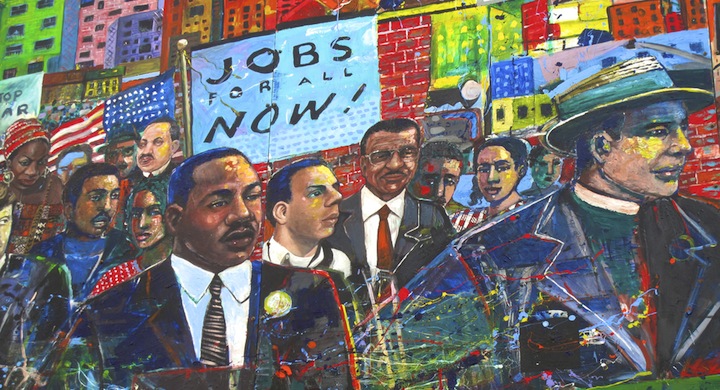As a teenager I can remember being stirred deeply by the stories and images of the Civil Rights Movement – on the rare occasions when they came up in my almost all white environment. I remember being horrified by the cruelties of racism, disturbed by the faces in history books frozen in anger and awed by the courage of the nonviolent freedom fighters. There was not, unfortunately, a substantive effort to educate me in issues of racial justice or America’s history with racism, but the exposure I did have ignited in me a desire to participate in making the world a better place.
Unfortunately, it also ignited in me significant ignorance and idealism. I thought that what I saw was all in the past, that we had moved on, that we were a better people now and that events like these were no longer possible in this more just, fair and free era.
What I didn’t realize then about these white faces frozen in anger, was that they were also faces that, before and after these iconic photographs, smiled at strangers, laughed with friends, encouraged the downcast, kissed scrapped knees, prayed prayers of faith, sang songs of beauty and blessed the dying.
At the time I didn’t think that the white teenage girls photographed shouting at black girls integrating their school had lives outside those pictures. Now I realize that they probably sat up late at night crying with broken-hearted friends, volunteered willingly at soup kitchens, respected their parents, worked hard in school and prayed sincerely in church. I know know that their lives were defined by more than that moment of anger.
At the time I didn’t think that the white policemen that were filmed violently blocking protesters from crossing a bridge had lives outside that historic encounter. Now I realize that they probably spent long hours going beyond the call of duty to help stranded motorists, put their lives at risk to protect innocent people, gave generously to charity, adored their wives and children, volunteered to serve the community. I now know that their lives were denied by more than that moment of violence.
These episodic flash points of injustice, passed down in grainy black-and-white media, left me with a caricature of racism as only practiced by people who were always mad, always mean, and were certainly people I could never be friends with or worship with or laugh with or sit down and eat a holiday meal with.
It was easy to vilify the whole lives of the faces captured by journalists and printed in books. I know now that these people were normal folks, regular old neighbors that I would have seen living quiet, unremarkable, upstanding lives.
But I share this realization not as an apologetic to invite us to be more forgiving in our judgments of these faces. On the contrary, I share this realization as an invitation to be more honest in our judgment of our own faces.
Just because we are good neighbors, faithful church members, caring friends, loving family members, generous stewards of resources or sincere worshippers does not mean that we are not capable of the tragic injustices of those who fought against Civil Rights. The fear, the rhetoric and the polices being enacted today are just as dangerous and unjust as they were then. Will we have the courage to stand against the tides of fear that are rising today? Will we be any better?
My wife and I are making a point to educate our children more extensively and more intentionally about justice. We talk about it at the dinner table, we reflect on passages of Scripture at night, we discuss major events happening in the world, we live intentionally in a diverse community, we read about it, and we go to museums and exhibits together. We are making sure that our boys are seeing these faces frozen in anger and that they have a chance to discuss and process what it all means. We want them to see the evil we are capable of and how it gets justified in the name of the law, the Bible, public safety and love of country.
As I continue to learn and grow, the events of the past and the present no longer seem so far apart. And when I compare what I see in museums with what I see in today’s media, it has left me with a disturbing vision of the future.
Fifty years from today in the Human Rights Museums that my grandchildren visit, their will be exhibits about refugee resettlement. Of the many exhibits there, I can see an interactive display that freezes for future generations what today’s faces are saying about Syrian refugees. I can see walls projecting the 2016 Presidential debates, catalogs of newspaper articles and a whole interactive area showcasing the anger spilling out on social media The difference this time is that I will know the people personally whose faces (or 140 character long proclamations) get frozen in time. I pray that the history being written now will tell a radically different story. But if history repeats itself, I pray that my church, my children and my friends are among those that will be frozen in time standing, speaking and acting in pursuit of justice for the oppressed.

